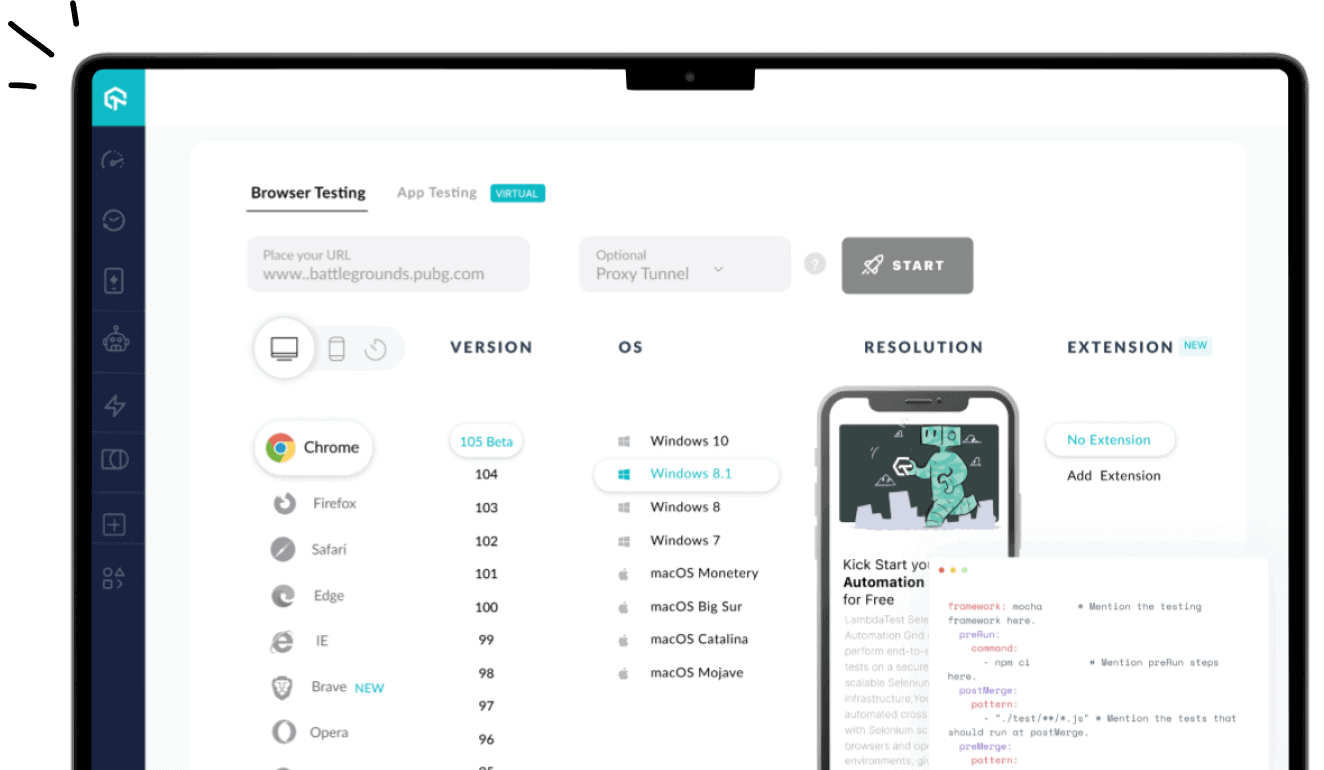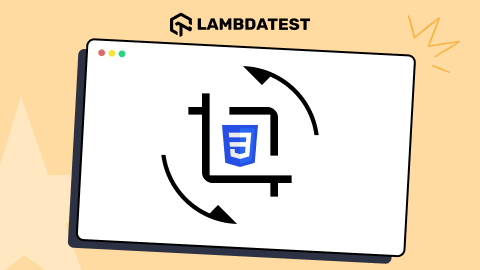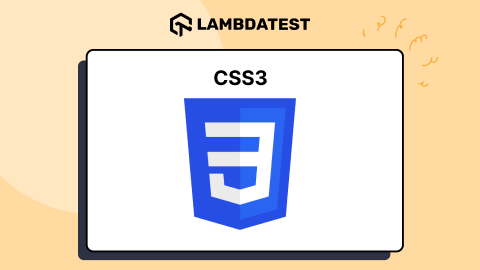KaneAI - Testing Assistant
World’s first AI-Native E2E testing agent.

Chromium vs. Chrome: Explore The Key Diffrences
Harshit Paul
Posted On: December 3, 2020
We all know about Chrome; it’s undisputedly the leader of the browser market. But have you heard about Chromium? Did you know both Chrome and Chromium are related to each other? While Chrome is the supreme leader of web browsers, Chromium is the one that holds a major chunk of the browser universe together. It is an open source project which forms the foundation for several different browsers, including the new Microsoft Edge. Though they both share a similar name, they are also different in several ways. In this blog, we will highlight the difference between Chromium and Chrome.
Let’s get to it, shall we?
TABLE OF CONTENT
What Do The Stats Say?
Chrome is a well-known browser globally, with around 63.5% of the market share. In short, more than 6 out of every 10 internet users in the globe use Chrome to browse the net. Although Safari, Edge & Firefox are next on the list, their fame pales in contrast with that of Chrome. Their joint market shares make up less than 1/3rd of Chrome. And thanks to W3Counter’s Browser Share statistics for Oct’ 2020, you can easily see which browsers are presently the most popular:
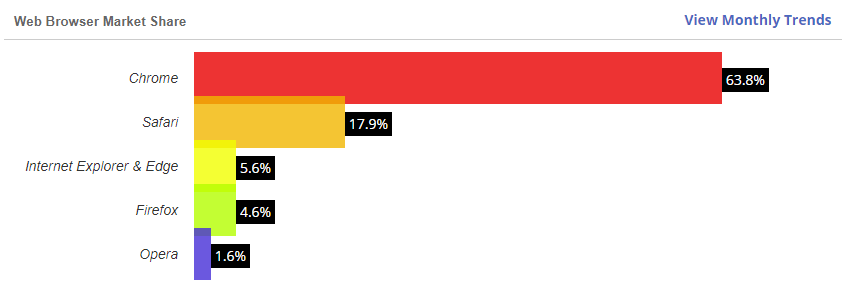
Now that you understand the kind of monopoly Chrome enjoys in the browser market, it is time to dive deeper into the Chromium vs Chrome topic. In the later sections, we will also discuss how the difference between Chrome and Chromium is relevant to cross browser testing.
What Is Chromium?
Chromium is an open-source and free web browser that is managed by the Chromium Project. Open-source and free means that software developers are allowed to change the source code. But, only the Chromium Project development community’s trusted members are permitted to do this. Chrome, on the flip side, is based on Chromium – developers further included their proprietary code to the source code of Chromium. In other words, Google Chrome has numerous features that are absent in Chromium; for example, it installs updates automatically and supports additional video formats.
Downloading Chromium- Easiest Way
The simplest and safest method to download Chromium is to do so from the download page of Chromium. As soon as you open the page, it will automatically recognize your device’s OS and provide the latest compatible edition of Chromium. If that’s not the case, you can also choose it from the list of Operating Systems.
Suppose you are a Linux or Windows user and would like to download an older version of Chromium. In that case, you can simply go to Last Known Good Revision towards the bottom to recover older Chromium editions. For Linux, you can install it straight from the Linux distro’s software repositories.
Pros & Cons
Pros:
- Doesn’t track browsing data
- Open-source
- More frequent updates
Cons:
- Updates need to be downloaded & installed manually
- No built-in support for Media codecs or Flash
As a free platform, Chromium is better for web developers as well as highly-advanced users. There are also no restrictions on what sorts of browser extensions can be included additionally. As Chromium is accumulated from the Chromium Projects source code, it modifies continuously. On the other hand, Chrome has quite a lot of release channels. However, the bleeding edge Canary channel updates not as much repeatedly as Chromium. Routine upgrades are posted on the Chromium Projects site.
While the Chromium browser is more frequently updated than Chrome, such updates must be manually downloaded and installed. This is the major difference between Chrome and Chromium, as there is no system of automatic updates. Chromium does not provide a built-in hold up for Flash. While Adobe Flash is not as prevalent as it once was, some websites do not function perfectly without it. As Flash is not open-source, the Chromium browser doesn’t have built-in support for this. If you wish to use Flash in Chromium, you will have to add or write the necessary code to support it.
Chromium does not support licensed media codecs such as MP3, AAC, and H.264. Without such codecs, you can’t play media in Chromium. If you wish to stream video from websites like YouTube and Netflix, either install these codecs manually or use Chrome. At last, Chromium does not by default have the enabled security sandbox. Both Chromium and Chrome have a security sandbox mode, but in some cases, Chromium has it turned off by default.
This summarizes Chromium’s side of the Chromium vs Chrome story. Now, let’s look into Chrome and the difference between Chrome and Chromium from Chrome’s perspective.
What Is Chrome?
Developed and managed by Google, Chrome is a proprietary browser. It was released in 2008. Chromium and Chrome browser are tied to each other because Google’s Chrome borrows Chromium’s source code. However, the one major difference between Chrome and Chromium is that the code in Chrome can’t be reversed, decompiled, or anchored to create other similar projects.
Downloading Chrome- Easiest Way
This is a straightforward process of simply visiting the Chrome website and downloading the browser. The website will choose a compatible downloadable version (for macOS or Windows), and it will be installed within minutes.
Pros & Cons
Pros:
- Easier to use and more stable
- Automatically Updates
- Built-in support for media codes and Adobe Flash
Cons:
- Tracks browsing data and history
- Zero support for extensions not found at its Web Store
For regular users, Google Chrome is perhaps a great choice. Chrome is stable and offers a safe browsing experience owing to the automatic error reports and updates. Unlike its open-source counterpart, it also offers built-in support for media codecs like MP3, H.264, and AAC, as well as Adobe Flash. Besides, Google Chrome’s limitations likely are not visible if you are not a great user. For instance, unlike Chromium, this web browser tracks cookies, history, browsing habits, and other data. However, you can always use the Incognito Mode to remove that data at the end of an online session.
By default, this browser on Mac and Windows only allows you to install extensions that are already downloaded from its Web Store. This distinguishes it from other browsers that enable outside extensions. An open-source platform demands more significant inspection and scrutiny from the user; external extensions are often malicious or untested. If you wish to have the freedom to install extensions from outside the Chrome store, you can use the developer mode. That is all about the difference between Chrome and Chromium.
Read: Best Chrome Extensions For Developers In 2020
Chromium Vs Chrome – Missing Chrome Attributes In Chromium
Apart from the significant difference between Chrome and Chromium we listed above, there are many more Chrome attributes that are missing out on Chromium. The following traits of Google Chrome are not featured in Chromium:
- PDF viewer (Built-in)
- Print preview
- Google Auto-update system for the browser
- Integrated Flash player
- Media codecs to support MP3, H.264, and AAC formats
Other dissimilarities comprise a choice for crash reports, usage stats to be automatically sent to Google servers, and rare advertising from Google, like for the Chromebook. Even with such traits, this web browser still follows the minimalist browser style that promotes a simple to view, lighter interface.
Difference Between Chrome And Chromium – Overall Findings
Chrome and Chromium are built on the same framework. Chromium is open-source, while Google Chrome is a proprietary software. The main distinction is the special features that Google adds to Chrome, such as the capability to login to the Google account at the browser level. However, on the other hand, Chromium is a comparatively lightweight and clean browser, while Chrome comprises several additional features such as automatic support and updates for additional video formats.
| COMPARISON | CHROMIUM | CHROME |
| License Support | Just offers support for basic, free codecs: Theora, Opus, WAV, VP8, VP9, and Vorbis | Free under Terms of Use of Google Chrome. Comprises support for licensed media codecs – H.264, MP3, and AAC. Provides access to extra media content, particularly websites using HTML5 video for streaming H.264 videos. Plus, comprises basic, free codecs: Theora, Opus, WAV, VP8, VP9, and Vorbis |
| Developer | The Chromium Project | Open source contributors to Chromium and Google Inc. |
| Website | www.chromium.org | www.google.com/chrome |
| Flash player | Not built-in; needs a plugin | The Plugin is built-in; could be easily disabled |
| Media codecs supported | WebM, Theora, Vorbis, | Theora, WebM, Vorbis, H.264, MP3, AAC, |
| PDF viewer | Not built-in; needs a plugin | The Plugin is built-in; be easily disabled |
| Print preview | No | Yes |
| Auto-update | No. It lacks the feature of automatic updates. You will need to update manually. But as it comes straight from the source code of Chromium Project, updates are made accessible highly frequently & the browser continuously modifies. | Yes. This feature is available. When you download this browser on Windows and macOS, you obtain an extra background app that automatically updates the browser. While on Linux, an update is completed utilizing standard software management tools. |
| Features | Doesn’t offer any additional functionality | Offers extra features like built-in support for several technologies, update mechanism, and DRM (digital rights management) elements to play copyrighted content |
| Related software | Chromium Operating System | Chrome Operating System |
| Stability | Chromium is more prone to crashes as compared to the most common Chrome versions. | More stable than Chromium. |
| Privacy | Does not gather and transfer much information. Can’t transfer info like crash reports & usage stats. | Gathers information and automatically transfers it to Google. This info can differ from device OS, crash reports, usage statistics, and more. |
| Security | It is as secure as Google’s Chrome. However, the lack of an automatic update mechanism depicts that security patches will need to be downloaded manually and installed by the end-user. | As Chrome is built on Chromium, the safety mechanisms are the same. However, all security patches to the source code are automatically updated on this web browser. |
| Logo | It has a blue logo. | Chrome has a colorful logo. |
| Automatic Updates | The automatic update feature is not bundled in this browser. | It automatically updates to the advanced version based on Google Upgrade on Windows computers. |
| Usage tracking and crash reporting | In this web browser, the choice of usage tracking and crash reporting isn’t possible. | It facilitates the usage statistics options and also has a crash reporting option. It can transfer all its valid information to the Google servers. The info sent to Google servers by this web browser adds universal data, such as the sites you found to have malware, the instruction-related to your Operating System and device needed, and deficiency Chrome settings, search queries, etc. Such instructions enable Google to offer you well by giving suggestions, outcomes, and ads that are incredibly relevant and helpful to you. |
| Web Store | Web store service isn’t feasible in Chromium. | It has a Web store with an array of web tools and apps. Users can make use of it in the browser and can quickly add together Chrome extensions. |
| Media-Codec support | Chromium supports the media in HTML5 video or audio codec accessible in WebM, Vorbis, VP9, Theora, etc. | It additionally supports H.264, AAC, and MP3 while supporting the media in HTML5 video or audio codec accessible in WebM, Vorbis, VP9, Theora, etc. |
| Sandbox support | In this browser, some Linux distributions encompass the Sandbox trait disabled. | In Chrome, Sandbox is forever enabled. |
| Adobe Flash Plugin | The plugin doesn’t support this web browser. Chromium additionally doesn’t support Flash natively. However, you can obtain the PPAPI (Pepper API) Flash plugin from Google’s Chrome and install it on this browser. | This browser easily supports the Adobe Flash Plugin. Chrome manages the PPAPI (Pepper API) version of Adobe Flash that is generally upgraded with Chrome updates. |
| Extension Restrictions | It allows anyone to upload an extension to the web browser. | It only enables extensions that are mainly hosted in its Web Store. (But you can upload extensions with this browser using Developer Mode.) |
| Stable vs. Beta Versions | With Chromium, one can download the browser’s beta versions that count bugs and other problems. If you want to use this browser yet want an extra stable browser, several other browsers are assembled based on Chromium’s code (comprising Opera, Brave, and Microsoft Edge). | When you download this web browser, you get what is referred to as “stable release.” Whatever the version you download has undergone beta tests & has been fixed whenever users found errors. |
| Profile is kept in | ~/.config/chromium | ~/.config/google-chrome |
| Cache is kept in | ~/.cache/chromium | ~/.cache/google-chrome |
| New releases testing | New release tests mainly rely on distribution. | New releases are well-tested prior to being sent to users |
Chromium Vs Chrome And Cross Browser Testing
Chromium and Google Chrome are accessible not just from desktops and laptops but also from Android/iOS smartphones and tablets. Chrome has now turned into the default browser for Android smartphones. And it’s accessible for non-RT Windows 8 devices both as a “metro” app and a traditional app. Also, the Chrome version is obtainable for iOS.
Accessibility on such a surplus of devices allows Google to provide some functionality with Chrome that is not obtainable on Chromium, particularly syncing through “Sign in with Chrome.” Users can seamlessly access their open tabs on one gadget when they shift to a different gadget using the same Google account on both gadgets (as long as they are signed-in to Chrome, not merely to Google.com). On the flip side, Chromium also runs on different mobile devices with its accessibility for Maemo 5 mobile OS for Nokia, Android, and MeeGo’s netbook version.
LambdaTest’s LT Browser is a next-gen browser to build, test & debug mobile websites. Try it now, for free!
Cross Browser Testing With Google Chrome
The sheer variety of devices that use Chrome comprises a major chunk of the smart user market. If people are using laptops or smartphones, they are more likely to use Chrome than other browsers. This makes it even more difficult for a website and web page to render error-free on a user device. If your website is not performing well on a particular device using the Chrome browser, you are more likely to lose that customer to a competitor with a mobile friendly website.
Enter a cross browser testing platform like LambdaTest. This platform allows you to test your website or web page on a combination of 3000+ browser and operating systems, making it absolutely impeccable for your end user!
The best way to do so is by using the Real Time Testing feature offered by our platform. You can simply select the Chrome version, OS, and resolution you want to test your website on, and you will be able to see how it performs in real time!
Here is a list of Chrome browser versions, OS, and resolutions offered by LambdaTest-
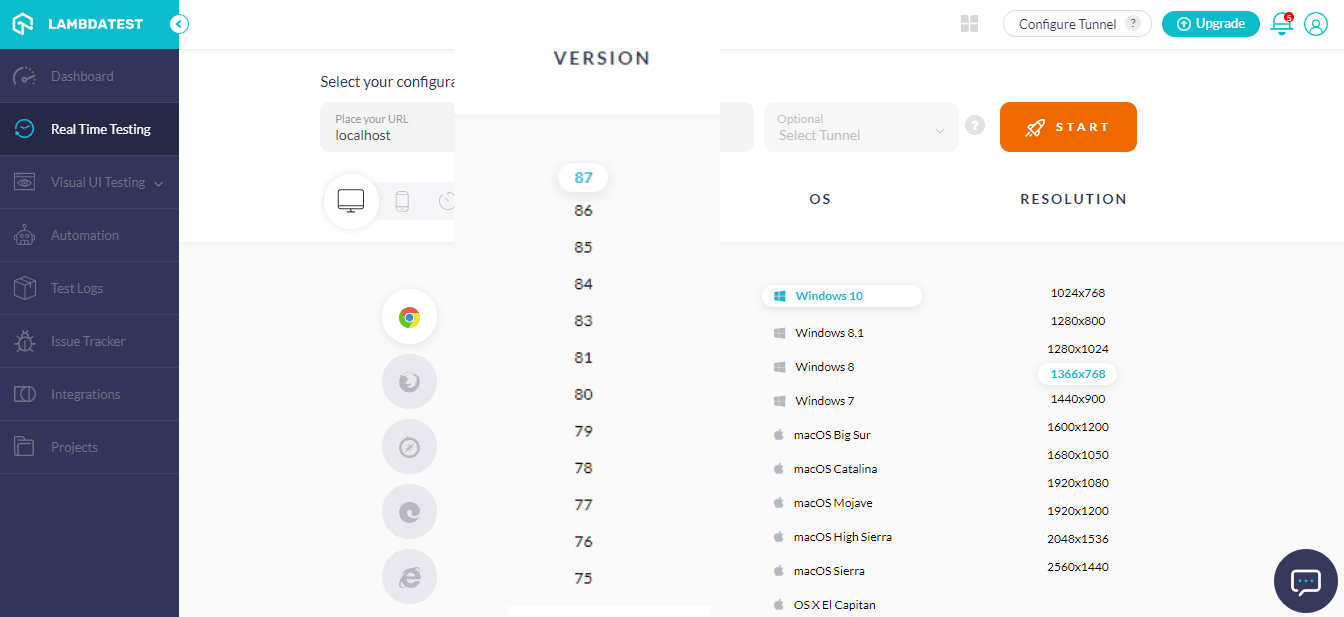
Chromium Vs Chrome- Which One Is Better?
It is tricky hard to decide between the feature-rich Chrome and open-source Chromium. For Windows, it is good to use Chrome as Chromium doesn’t come with a steady release, which applies to macOS as well. In Linux’s case – known for its love for open source and free software, Chromium may be the best choice. However, you will need to live with the fact that it does not automatically update, lacks media codecs and Adobe Flash plugin. But, several Linux distributions may provide a modified Chromium, which comes bundled with numerous missing attributes.
Chromium is now being considered the default browser in several Linux distros instead of the browsers like Firefox. Chrome is also accessible for Linux. If you wish to use free software and try to escape any closed-source alternative, then Chromium is an excellent choice for you.
So, Chromium or Chrome? The response depends on what you necessitate in a browser. Chrome is, of course, the better option for most users; however, Chromium can be the right choice for advanced users and for those who place a great value on coding and privacy. But if you require a browser that does not require any special configuration, then Chrome is just for you. Use all the information above and make the right choice! Start your free web browser testing today.
Frequently Asked Questions
Is Google Chrome the same as Chromium?
Chromium is an open-source and free web browser that is managed by the Chromium Project. In comparison, Google Chrome is a proprietary browser developed and managed by Google. Unlike Chromium, Google Chrome offers built-in support for media codecs like MP3, H.264, and AAC, as well as Adobe Flash.
Is the Chromium browser safe?
Chromium is almost as safe as Chrome. But the fact that Chromium does not allow automatic updates can be a major downside when it comes to security and privacy. If you are running a version of Chromium that has not been tested and mitigated yet, it is more susceptible to having errors that can even compromise your information. However, the functionalities of Chromium generally remain intact.
Is Chromium browser a virus?
Chromium, when installed from a trustworthy source, isn’t a virus. In reality, this web browser is much safer than most of the most accepted browsers. It might get labeled as a virus by people who have installed it without knowing what they were downloading. There is also a malicious Chromium virus that you need to stay away from.
Does Chrome track my info?
Chrome has a user-metrics trait that sends info to Google about how you use the varied components of the web browser. This allows them to ensure decisions to advance user experience. Besides, Google Chrome used to come with a unique client ID. However, Google terminated this in the year 2010.
Which is faster Chrome or Chromium?
Few users report that the usage of memory is about the same for both browsers. But, RAM consumption of Chromium is likely to be somewhat smaller as it communicates less with Google. This makes Chromium a faster alternative between the two.
Author


